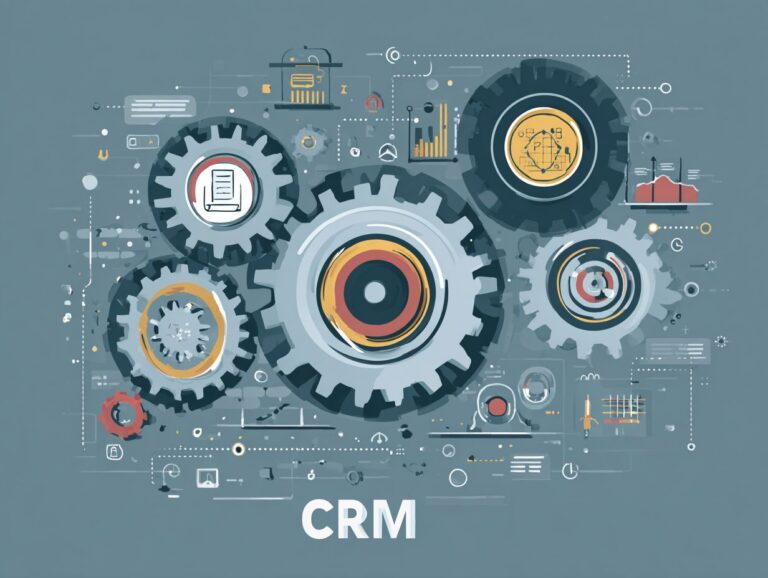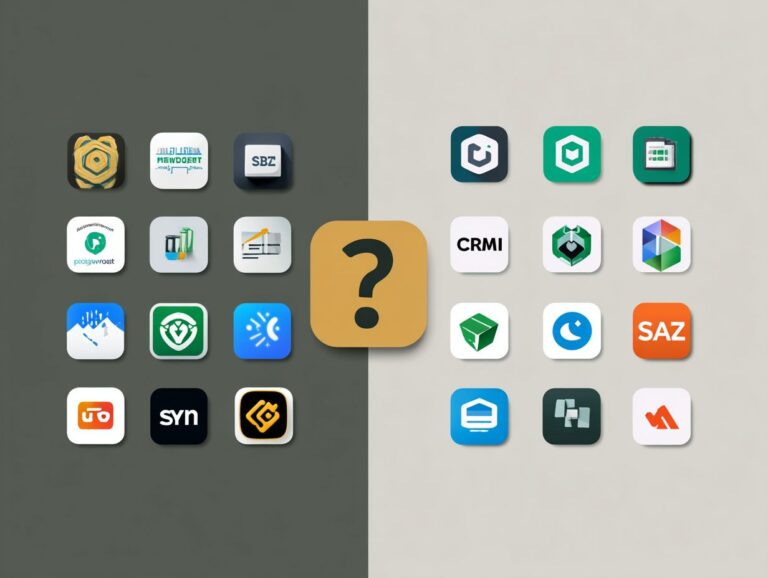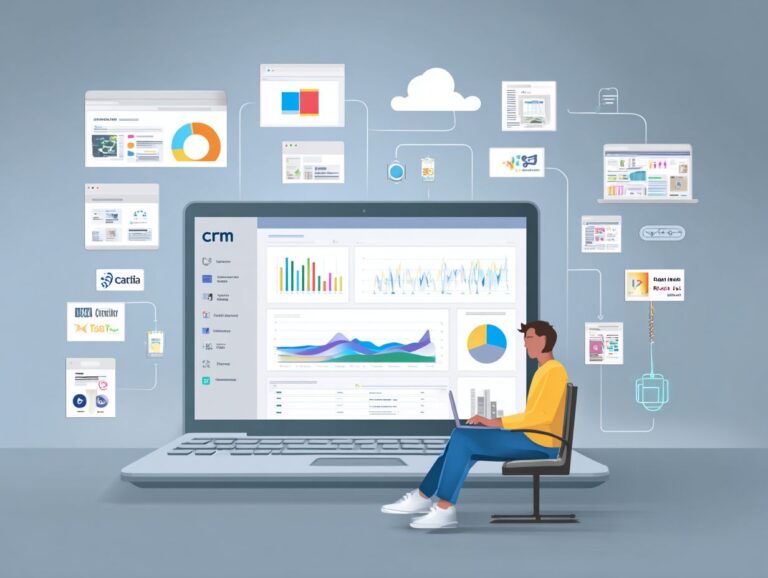API Testing for CRM: Importance, Processes, and Best Practices
In today’s competitive market, successful CRM systems work well with APIs, allowing for easy data exchange. Whether you use Salesforce or HubSpot, knowing how to test APIs is essential for keeping your Customer Relationship Management systems strong.
This article examines why API testing matters, explains key steps, and offers tips to improve your CRM’s performance and reliability. Prepare to improve your CRM plan by learning how to test APIs!
Key Takeaways:
- API testing is essential for keeping data accurate and improving user experience in CRM systems.
- Effective API testing processes include thorough test planning, test case development, and continuous execution and monitoring.
- For successful API testing, use automation tools and set up regular testing schedules. Also, handle problems like version changes and dependencies.
- Importance of API Testing for CRM
- API Testing Processes
- Best Practices for API Testing
- Common Challenges in API Testing
- Frequently Asked Questions
- 1. What is API Testing for CRM and why is it important?
- 2. What are the key processes involved in API Testing for CRM?
- 3. What are the best practices for API Testing for CRM?
- 4. How does API Testing for CRM help maintain data integrity and security?
- 5. Can API Testing for CRM be automated?
- 6. What are the consequences of not performing API Testing for CRM?
1. Definition and Purpose

An API, or Application Programming Interface, serves as a bridge between different software applications, allowing them to exchange data and functionalities seamlessly.
APIs facilitate interaction by defining protocols and tools for building software. Their core purpose is to enable developers to access specific functions without needing to understand the internal workings of the application.
Testing is important because it checks if APIs work properly in different situations. Developers can validate endpoints and verify responses to check if they adhere to expected formats, using tools like Postman or Swagger.
By performing thorough tests, developers can confirm that the API meets user needs and works well with other systems, leading to more dependable software.
2. Role in CRM Systems
In CRM systems like Salesforce and HubSpot, API testing is necessary to make sure customer data moves correctly between various applications, improving how well operations work.
For example, the Salesforce API lets developers handle records through code, which is important for apps that deal with customer interactions.
Similarly, the HubSpot API provides access to various marketing tools, enabling seamless integration for email campaigns and lead management.
To verify that everything functions properly, employ detailed testing techniques like automated unit tests and manually examine data processes. This makes sure both APIs manage unusual situations like repeated entries or problems with data format, protecting the accuracy of customer details.
Importance of API Testing for CRM
API testing is important in CRM systems because it protects data accuracy and improves how users interact with the system, directly affecting how happy customers are.
1. Ensuring Data Integrity
Effective API testing checks that data received from API calls is correct and reliable, helping avoid problems such as data corruption. One effective method for API testing is to use tools like Postman or SoapUI.
Postman lets you create tests that automatically check your APIs to confirm they are giving the correct status codes and data formats. For instance, you can create tests that check if the API returns a 200 status code for successful requests and that the data matches the predefined schema.
Incorporating monitoring strategies can help track API performance over time, catching inconsistencies before they lead to larger issues.
2. Enhancing User Experience
Thorough API testing makes sure that programs function correctly and enhances user experience by minimizing delays and making interactions seamless in CRM applications.
To achieve optimal API performance, target a response time benchmark of under 200 milliseconds. This helps users get data quickly and avoids causing frustration.
Implement user acceptance testing (UAT) to gather real-world feedback, focusing on key areas such as speed and reliability. Tools like Postman and JMeter can simulate user interactions, helping identify slow endpoints or bottlenecks.
Frequently review and update API calls. Even minor code changes can greatly improve performance and make the CRM more user-friendly.
API Testing Processes

A well-organized API testing process includes detailed planning, creating complete test cases, and careful execution to make sure the API is fully tested.
1. Test Planning
Effective test planning includes setting goals, selecting important APIs to test, and figuring out the resources required to carry out tests properly.
Start by clearly outlining the scope of the testing. Define which API endpoints will be included, such as user authentication, data retrieval, and any integration points.
Next, assign team members to handle each API. Decide if you will test manually or use scripts with tools like Postman or JMeter.
Make a timeline with stages like creating tests, running them, and checking results, giving about two weeks for the first round of testing. This organized method guarantees complete and successful API testing.
2. Test Case Development
Writing detailed test cases involves describing what should happen for each API task, ensuring all key tasks are thoroughly checked.
To create effective test cases for API testing, start by identifying key functionalities, such as authentication, data retrieval, and error handling. Use tools like Postman for manual testing and JMeter for automated stress tests.
Common test cases include:
- Verifying response status codes (e.g., 200 for success)
- Ensuring required fields are returned in responses
- Testing invalid inputs to check for correct error messages
Putting these test cases in a spreadsheet improves clarity by listing the endpoint, input details, expected results, and actual outcomes for complete tracking.
3. Execution and Monitoring
The execution phase involves running the test cases and watching the results carefully to find any differences or problems quickly. During this phase, utilizing CI/CD tools like Jenkins can be highly beneficial.
Set up Jenkins with plugins for running tests automatically, enabling it to execute your test cases regularly. Implement logging tools such as Logstash to capture detailed output from your tests. This setup helps identify failures and figure out why they happen quickly.
Regularly analyze your logs to spot trends or recurring issues, ensuring continuous improvement in your API’s performance and reliability.
Best Practices for API Testing
Using best practices in API testing can make testing faster and more effective, resulting in more dependable software.
1. Utilizing Automation Tools

Tools like Postman and JMeter simplify API testing by reducing manual effort and speeding up the process.
Postman provides an intuitive interface for creating, sharing, and testing APIs, allowing teams to build extensive test suites through easy scripting. Its Collection Runner can run tests in different environments, saving time during development.
JMeter, on the other hand, is great for load testing. It can simulate lots of traffic and check performance. You can add these tools to your work process using CI/CD pipelines, which will run tests automatically with each code update. This increases both speed and dependability.
2. Regular Testing Schedules
Creating consistent testing routines ensures APIs are monitored for how well they work and dependability, reducing the chance of surprise issues.
To implement this effectively, schedule tests weekly for critical APIs and monthly for those with less frequent updates. Use tools like Postman for manual testing or Apache JMeter to simulate user requests and check response times.
Track performance metrics such as latency and error rates through dashboards like Grafana. Checking this data often lets you make quick changes, keeping the API running well and spotting possible downtime early.
Common Challenges in API Testing
API testing is important, but it often faces typical problems that can reduce its success if not handled correctly.
1. Handling Versioning Issues
Handling versioning issues entails managing changes in API specifications, which can affect existing integrations and necessitate thorough regression testing.
To effectively manage APIs, start by implementing version control using semantic versioning (e.g., v1.0.0, v1.1.0) to clearly communicate changes. Keep detailed records of all modifications. This helps developers see how updates might affect their integrations.
Regularly perform regression testing to check that updates don’t interfere with current functions. For example, use tools like Postman or Swagger to run tests automatically and simplify this process.
By integrating these strategies, you can significantly improve API reliability and user satisfaction.
2. Managing Dependencies
It’s important to manage how different APIs depend on each other because if they’re not tested and watched closely, they can create bigger problems.
To address these challenges, create a dependency matrix that visualizes how each API interacts with others. This matrix can help track which API versions are compatible.
Use sandbox environments to isolate tests; tools like Postman or Insomnia can simulate requests without affecting production systems.
When dependencies change, frequently update the tests and review the outcomes in a test environment to confirm they don’t create issues elsewhere. This active method reduces risks and makes tasks simpler.
Frequently Asked Questions

1. What is API Testing for CRM and why is it important?
API Testing for CRM is a process of testing the application programming interface (API) of a CRM system. This is important because it keeps the CRM system running well, finds any problems or mistakes, and helps keep data safe and accurate.
2. What are the key processes involved in API Testing for CRM?
The key processes involved in API Testing for CRM include testing the API endpoints, parameters, headers, payloads, authentication, error handling, and data validation. These methods confirm that the API works properly and can manage various requests from different systems.
3. What are the best practices for API Testing for CRM?
Some best practices for API Testing for CRM include creating a test plan, using automation tools, testing both positive and negative scenarios, performing load and stress testing, and regularly reviewing and updating the test cases. It is also important to involve developers and stakeholders in the testing process.
4. How does API Testing for CRM help maintain data integrity and security?
API Testing for CRM helps maintain data integrity and security by ensuring that the API only allows authorized access to data, and that the data is transmitted and stored correctly. It also helps identify any vulnerabilities or security flaws in the API that could compromise the security of the CRM system and its data.
5. Can API Testing for CRM be automated?
CRM API Testing can be done automatically with tools like Postman, SoapUI, or Selenium. Using automated systems can save time and effort, and it provides more accurate and reliable results than manual testing.
6. What are the consequences of not performing API Testing for CRM?
Not performing API Testing for CRM can lead to various consequences such as incorrect data being transferred or stored, security breaches, system crashes, and negative impact on customer satisfaction. It can also result in additional costs and delays in fixing bugs and errors that could have been detected and prevented through proper testing.





